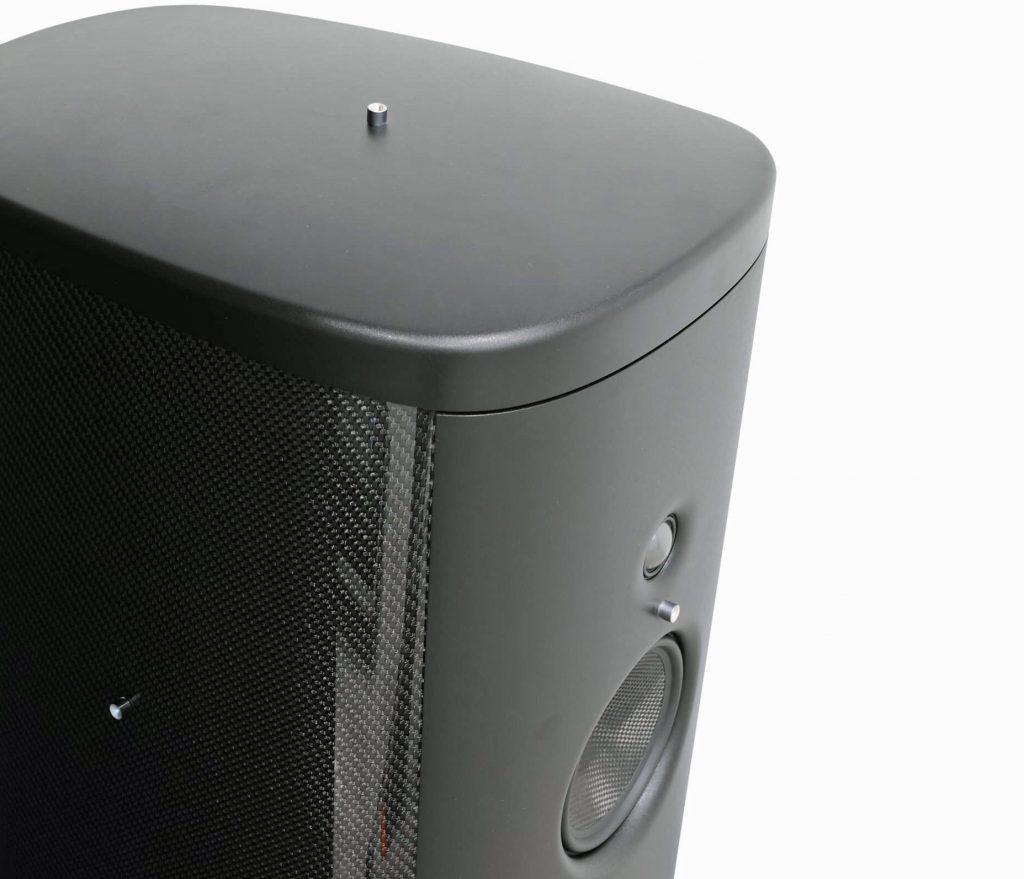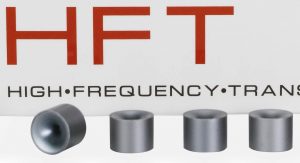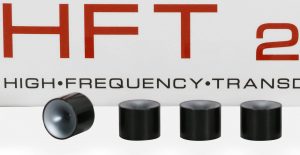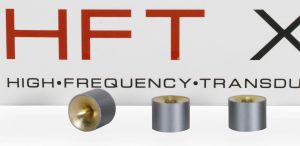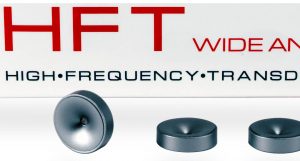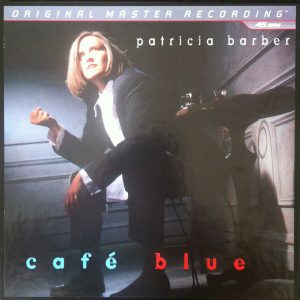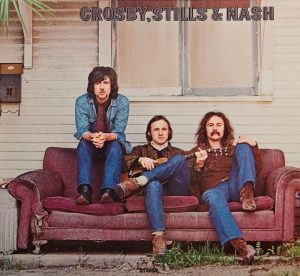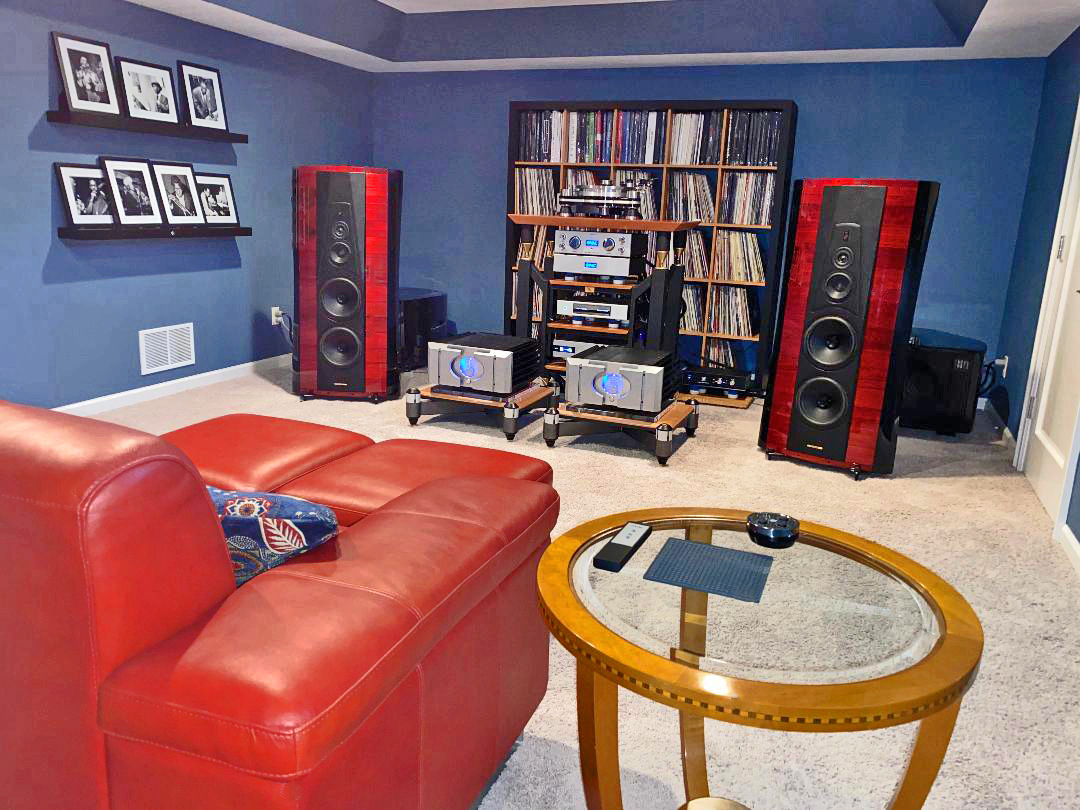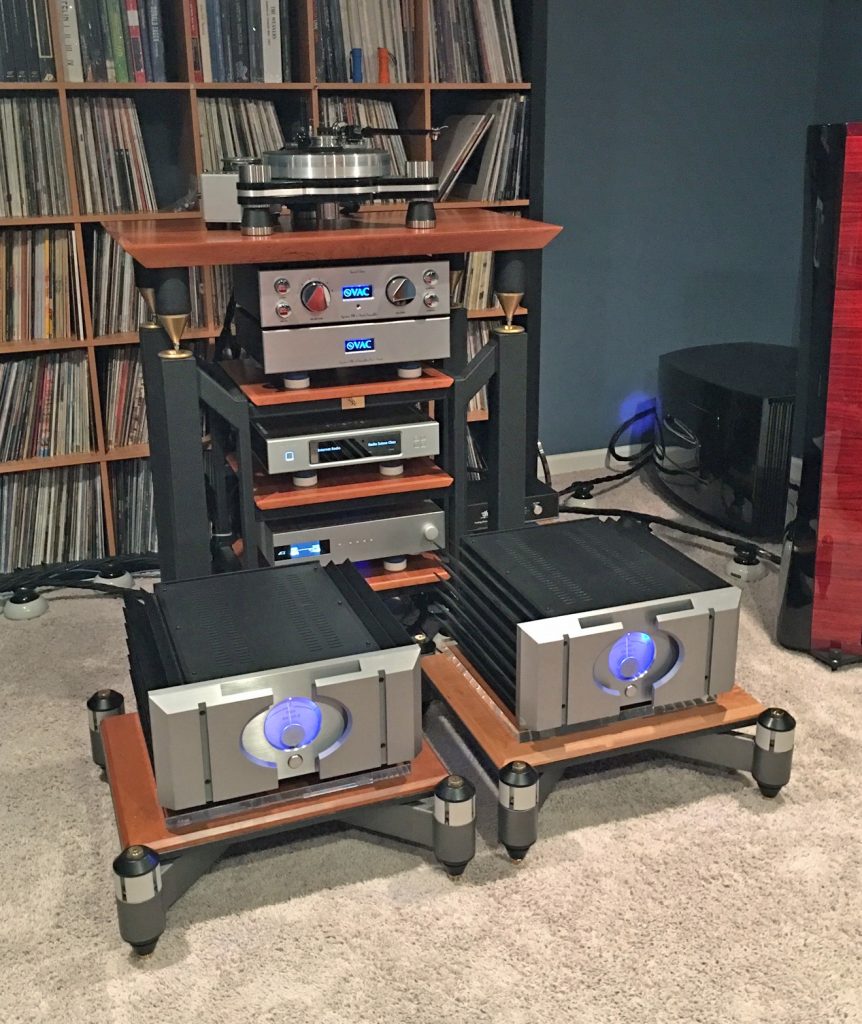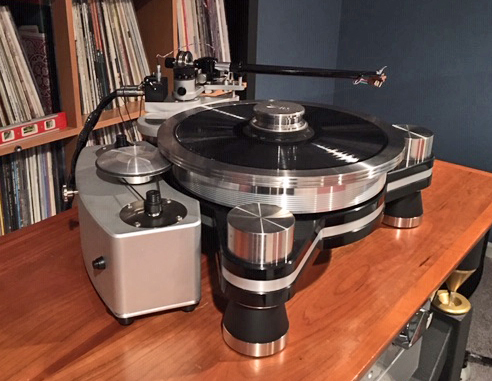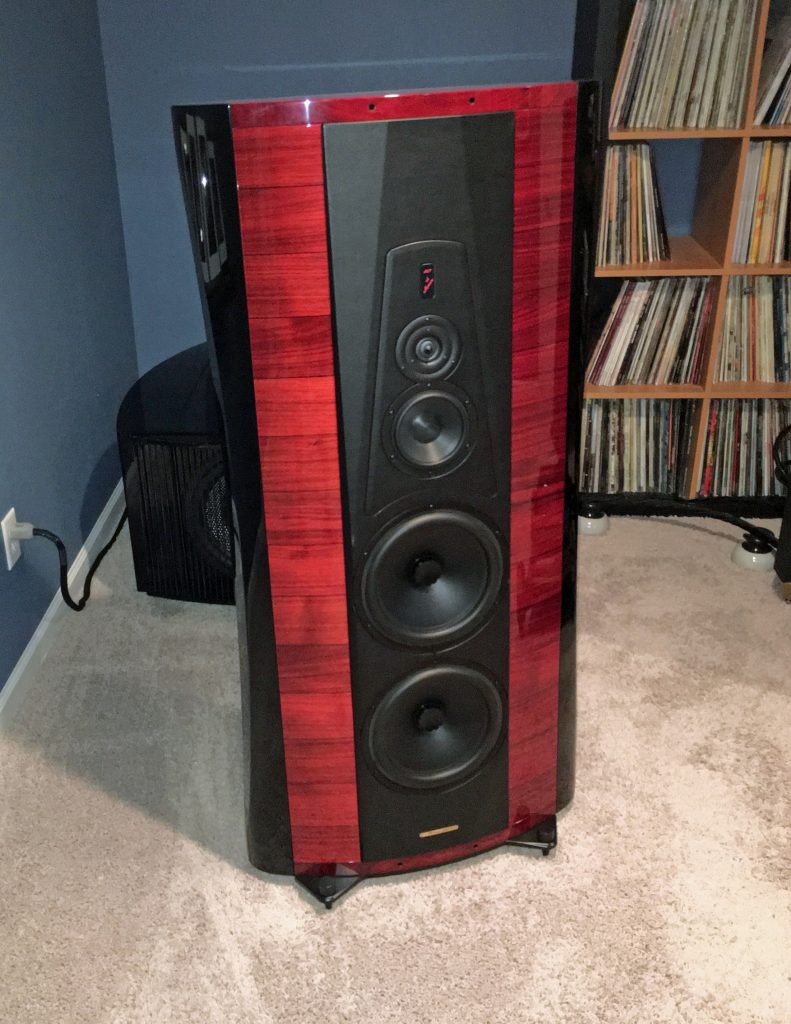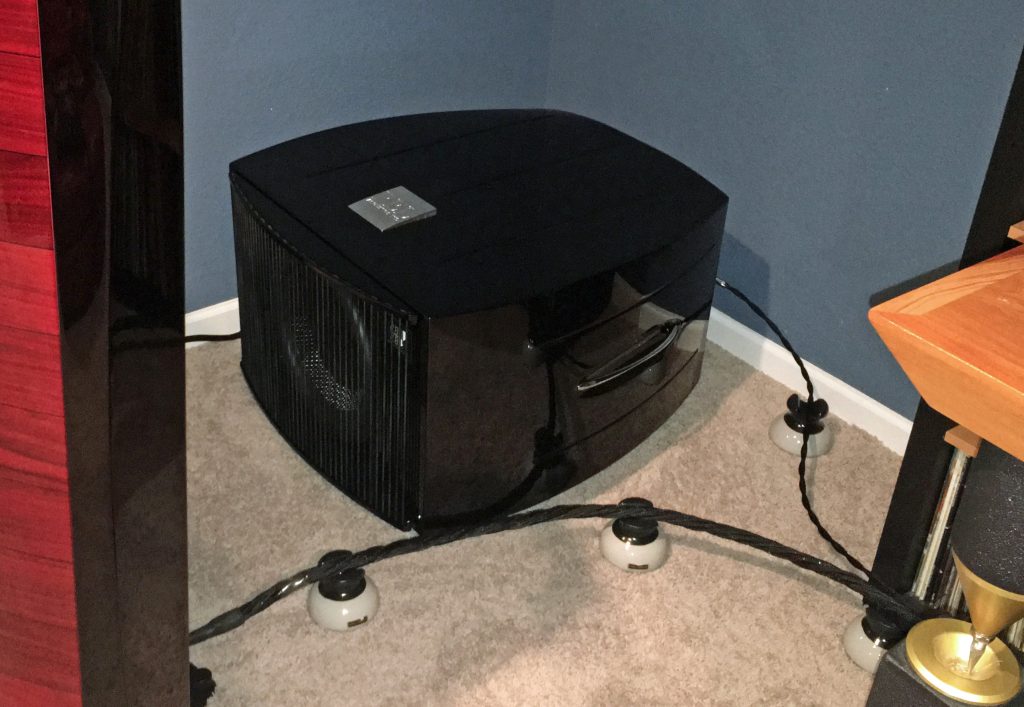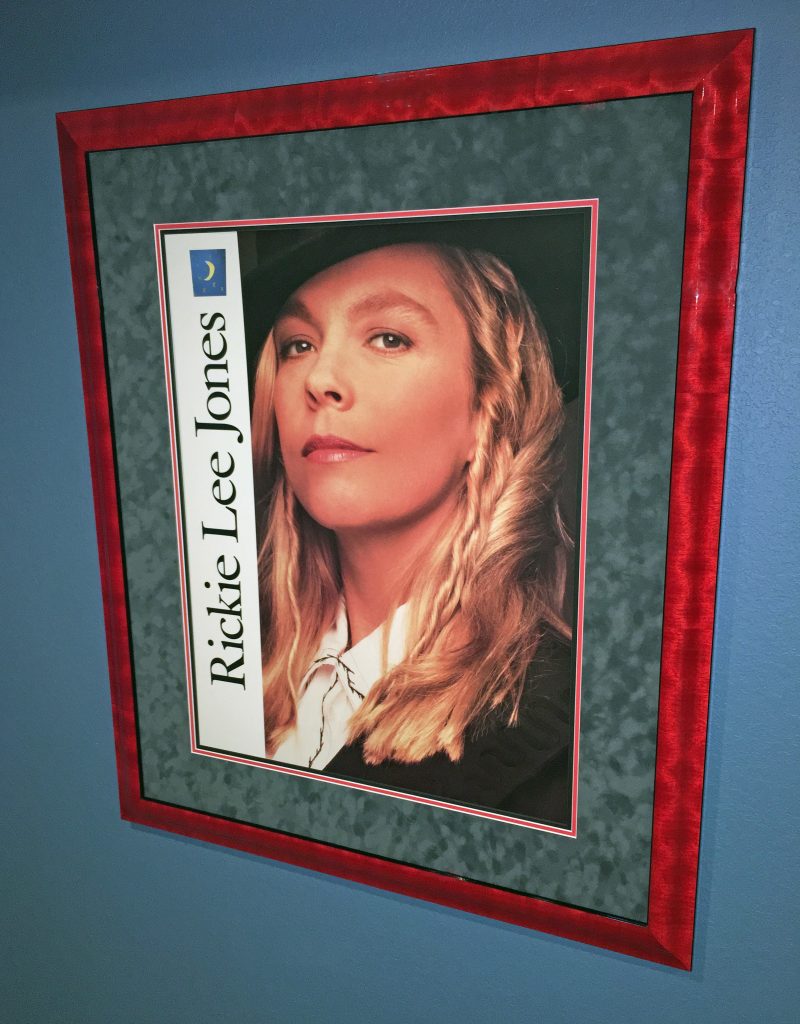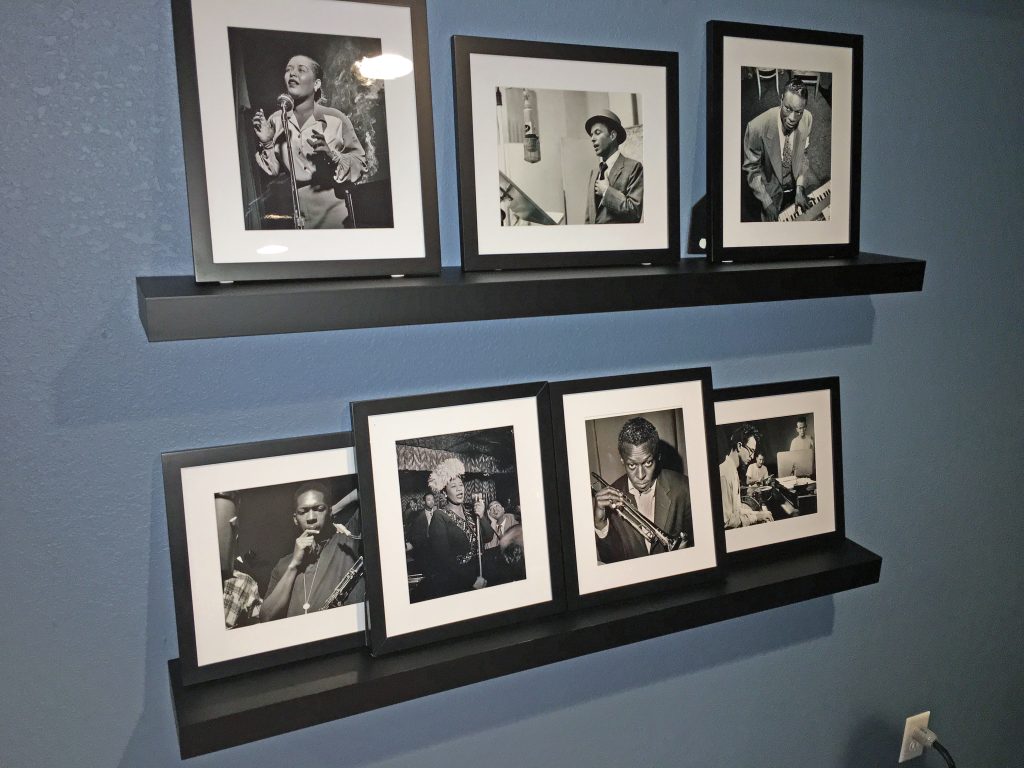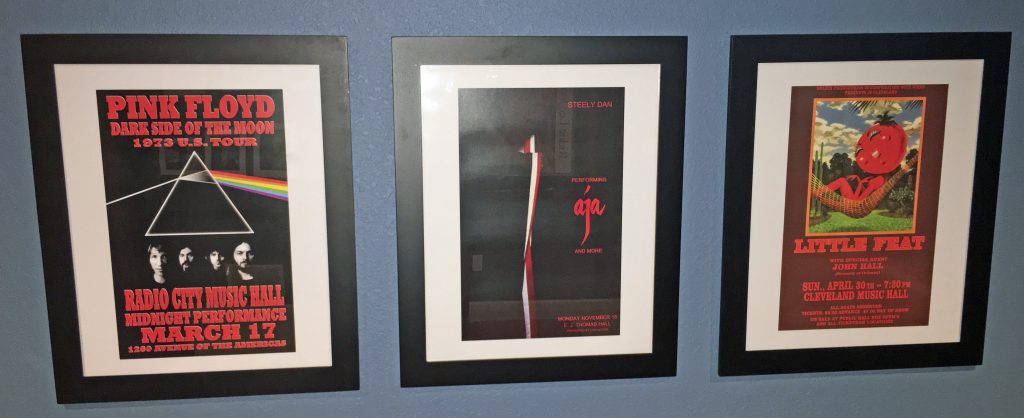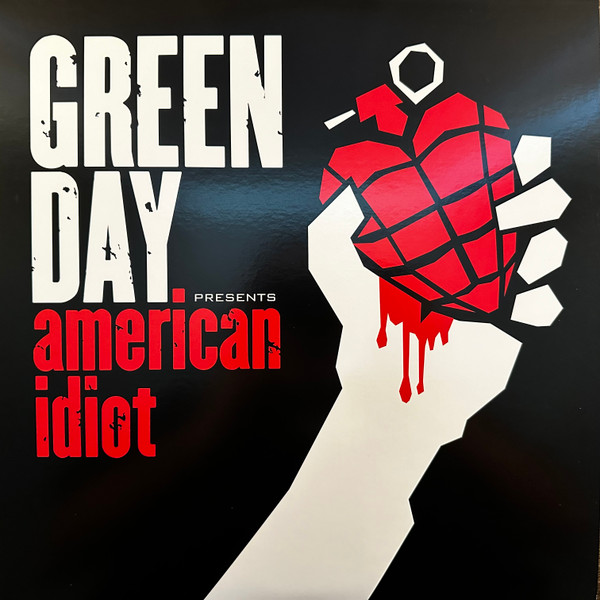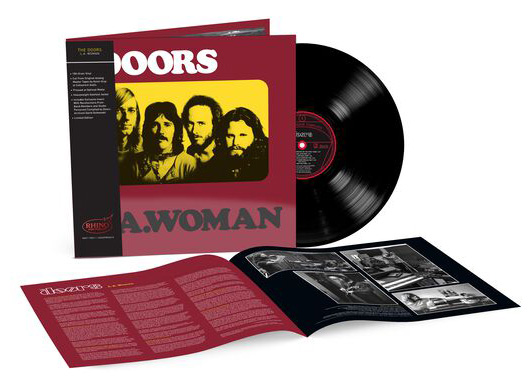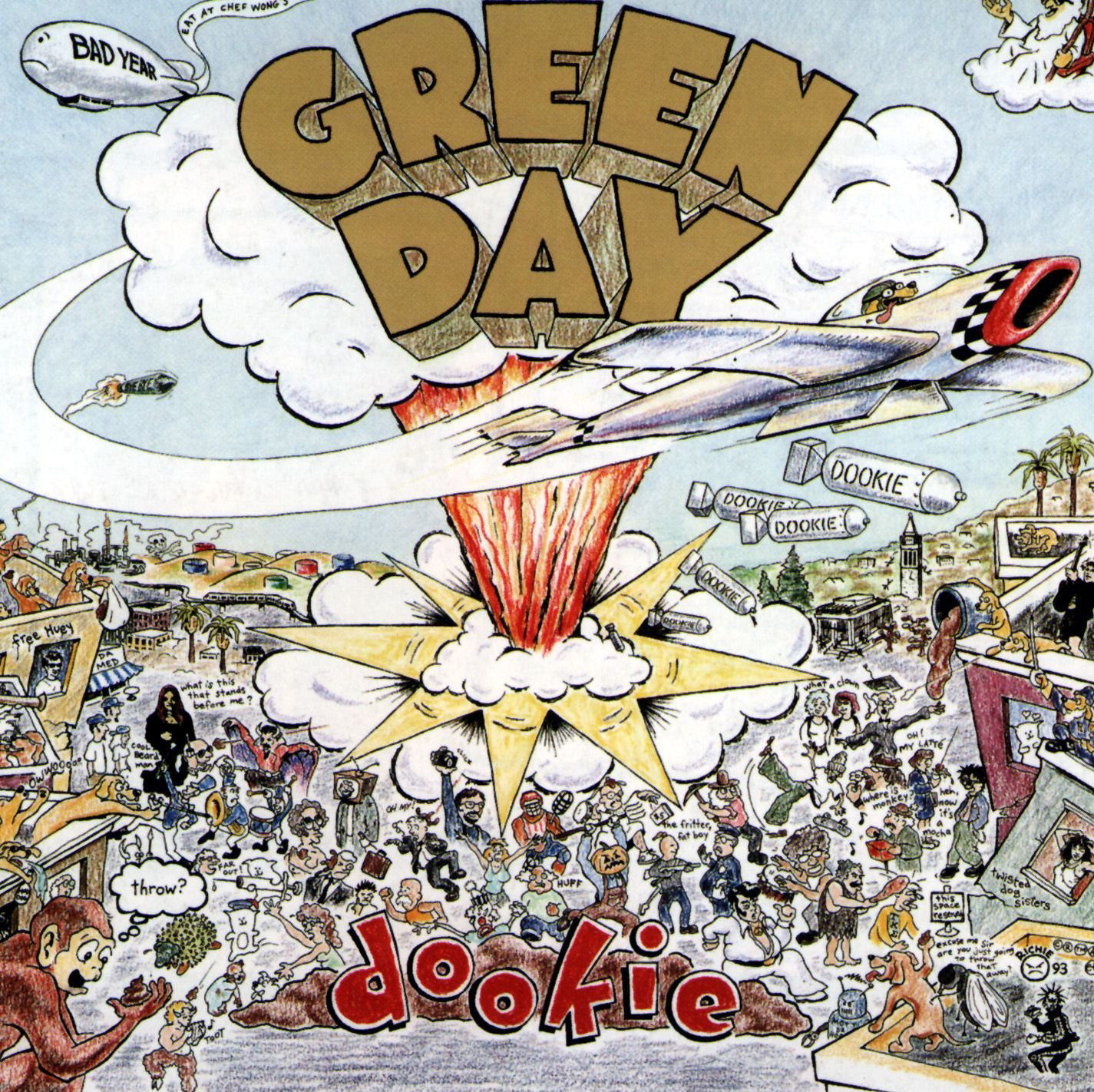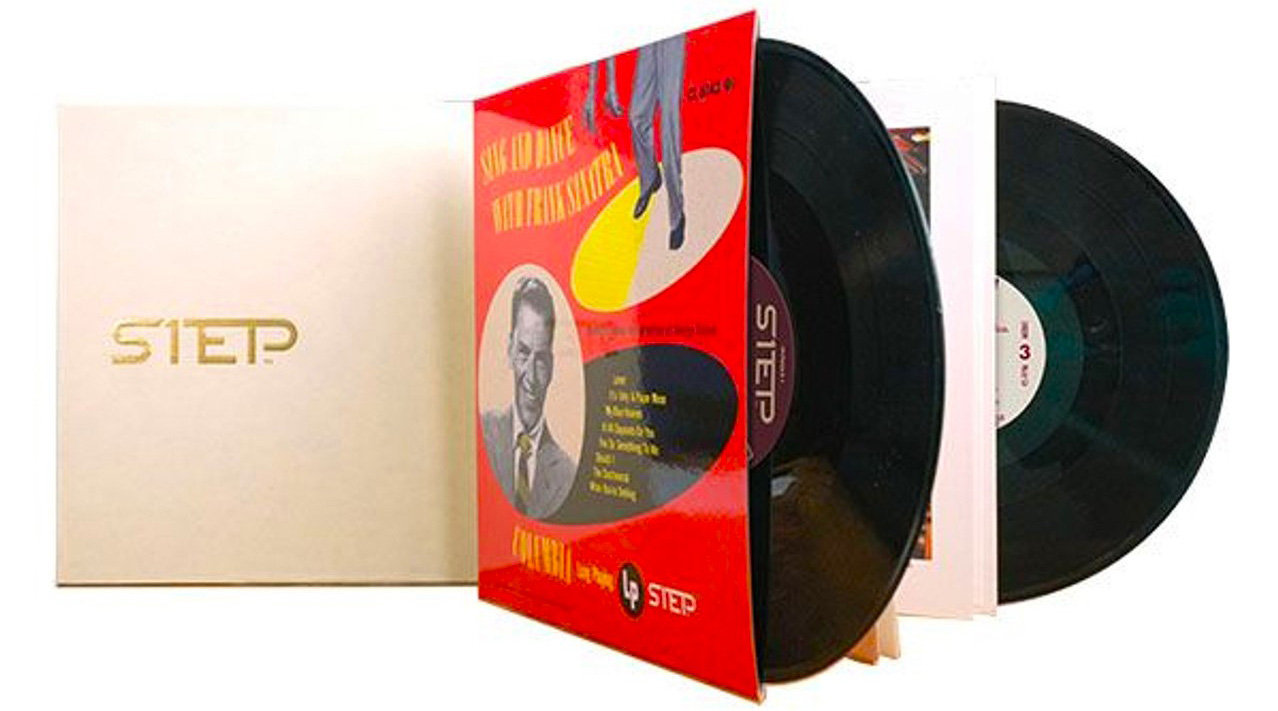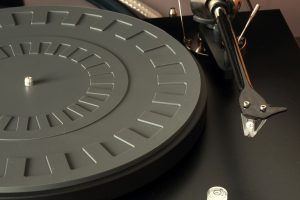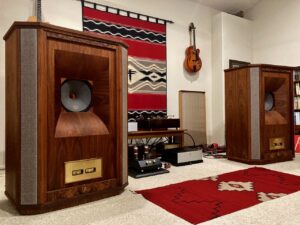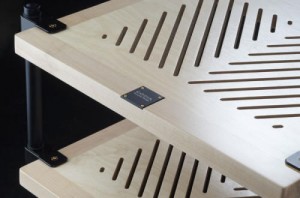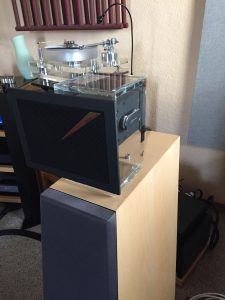As I stated in my Axpona 2019 show report, if you have not experienced one of Ted Denney's presentations on acoustics and specifically his demonstration of the Synergistic Research (SR) High Frequency Transducer (HFT) product line, you really need to include it on your bucket list. This year, the demonstration was probably my favorite at the show as it provided a clear before and after comparison like nothing else at Axpona. By the overt if not slightly dramatic reactions from those in attendance, most of the audience members were right in synch with what I heard and witnessed. As always, this presentation was very impressive.
I have reviewed several SR products over the years and I never cease to be amazed at Ted's creativity and his out of the box designs. This includes the SR bread and butter products like cables and power conditioning, but also such accessories as isolation platforms, ground plane connectivity and even fuses (possibly the product with the most bang for the buck).
This is just a small subset of the portfolio—please see the SR website for even more innovative possibilities. The HFT product line is a good place to start if you want to wet your beak and try first hand what SR can offer. Compared to the pricing of what most products can cost in the high end world, for a fairly reasonable investment you just might find that HFT's can provide a significant upgrade to your system.
Review System
- Sonus Faber Stradivari Speakers
- REL No. 25 Reference Subwoofers
- VAC Signature Mk IIa SE Preamplifier w/Phono Section
- Pass Labs XA100.5 Monoblock Amplifiers
- VPI Avenger Plus Turntable
- VPI Unipivot Fatboy Tonearm w/Nordost Reference Phono Wire
- van den Hul Crimson XGW Stradivarius Moving Coil Cartridge
- dCS Bartók DAC
- Aurender N10 Music Server
- Synergistic Research Element CTS Cables throughout
- Synergistic Research PowerCell 12 UEF SE Power Conditioner
- Synergistic Research Passive Ground Block
- Rix Rax Hoodoo Component Rack
- Adona Zero GX1 Amplifier Stands
- Custom Isolation Inc. Acrylic Shelves
- Magico QPod Footers
Caveat Emptor
System synergy and personal taste are critical when evaluating high-end audio products. This review is based on my subjective requirements, my subjective ears, my specific system, and my specific listening room. This combination is only one data point of many that exist out there for these components. Please consider my comments and analysis accordingly.
Design
Rather than try to paraphrase what I have learned at the various shows and from my personal discussions with Ted and Andy, lets just use the documented descriptions right off the SR website to define what the HFTs are all about. Please read the hyphenated descriptions below. I will provide my own comments and personal experience with these products in the "Sound" section that follows.
HFT Overview
About the size of a shirt button, yet powerful enough to transform the way you experience music, HFT's improve nearly all aspects of system and room performance. With HFT's your speakers and room disappear leaving you with nothing but a live holographic musical event in your listening room, or living room. HFTs oscillate at high frequencies creating an energy field in your room that overpowers room vibrational distortions to correct phase and frequency interactions for harmonic balance in your treated room. You hear an increase in depth and width, with clearer more extended highs, and tighter bass. Everything sounds more live, clearer, and more natural.
HFT Standard - $299/5pack - $499/10pack
The original HFT's will make up the bulk of your HFT acoustic treatment. Most rooms are recommended to start with 15-20 standard HFT's. Your speakers and room will disappear as your soundstage expands into a realistic and holographic representation of the musical event with improved frequency response from top to bottom.
HFT 2.0 - $299/5pack
HFT 2.0's are added to your room's existing HFT installation to create warmth and musicality. A combination of standard HFTs, HFT 2.0 and HFT X will provide the most balanced results.
HFT X - $299/3pack
HFT X's are added to your existing HFT installation to add focus, resolution and air. A combination of standard HFTs, HFT 2.0 and HFT X will provide the most balanced results.
HFT Wide Angle - $399/3pack
HFT Wide Angle's are added sparingly to a room already treated with HFT's. With a wider and more powerful dispersion pattern they dramatically increase your sense of immersion in the sound field while expanding the scale and dimension of your soundstage.
The Install
I have always been intrigued by the potential of utilizing HFT's in my listening room and I requested a sample from Andy Wiederspahn, General Manager and Ted's right hand man over at SR. As always, Andy graciously supported my request and he also provided a few additional suggestions. Over the years he has gained considerable knowledge of my taste in music and also my specific system configuration so this was much appreciated. This focus on the customer seems to be a key to the SR success story and this was just another example.
Before I knew it, I was quickly experimenting with several combinations while following the excellent on-line user manuals for each HFT model. I must restate this as it is a critical point. Compared to many user manuals and online directions from other manufacturers, SR does provides superb instructions for how to install the various models via multiple stages of HFT implementation. This greatly helped the process and made everything very simple and efficient. Yes, Andy provided some additional insight, but these instructions will fully support the needs of most if not all listening rooms. Good job SR!
Sound
From a sound perspective, lets start off with a few additional comments about the installation. Remember that these comments are fairly subjective and specific to my room and component configuration.
Though I experimented with all the models in different quantities and locations, I found that the HFT Wide Angle made the greatest overall impact. I auditioned all four models in many of the positions suggested by the user manuals and more often than naught I selected the HFT Wide Angle for the best possible results.
After much trial and error, I surprisingly ended up using only one device on each speaker and that was an HFT 2.0 below each tweeter. This was extremely effective in adding additional warmth without a loss of detail and eliminating some of the ringing that I was hearing on certain tracks. For my system, this particular improvement was a revelation.
I started off using many of the HFT Standard and HFT X devices throughout the room but I found myself in somewhat of an overkill situation. It is hard to describe the results but it seemed like there was just too much information floating around within the soundstage. This was all very exciting but it did not feel natural or realistic.
I ended up scaling back after patiently experimenting and ended up using a series of HFT Standard and HFT X devices in the corners on the front wall and one HFT X above my listening position on the ceiling. Again, it took some patience but I eventually found a sweet spot and boy was it worth it.
Beyond the above, the overall results were quite startling. When my wife walked into the listening room after the process was finally completed, she made one of those quick jaw dropping expressions and sat down without a word. Nothing more was said. She just wanted to listen to the music without interruption. I understood.
Images truly stabilized and were much more clearly defined—even on the most mediocre of recordings. There was considerably more air and immediacy around individual instruments and vocalists. The soundstage extended well beyond the outer edges of both speakers and seemed to reach beyond the front wall and all the way back into the listening position.
Mids were more rounded and saturated with impressive texture and timbral purity. Highs were less glassy with additional ease and liquidity but never lacked appropriate speed and detail—a very rare combination by my experience. Bass depth and impact did not seem to improve but there was a certain sense of muscularity and focus that was not apparent before.
Maybe a few more HFT adjustments would enhance the low end even more, but at some point I was so pleased that I did not want to touch or change anything. I am sure you know the feeling if you have played the audiophile game as long as I have.
Music
Patrisha Barber, Café Blue
The MFSL 45 RPM pressing of this recording is not only one of my favorites but it is also probably the best sounding LP in my collection. I have heard this recording hundreds of times in many formats at shows, at dealerships and in private listening rooms but the MFSL 45 RPM pressing is a cut above the rest. It never fails to impress.
After experiencing some of the above results, I was curious what impact the HFTs might have on a superb recording and thus the Café Blue selection. Could things get even better? I also wanted to listen to something of less quality (see Crosby, Stills & Nash below) and to compare the results.
Well, I was gob smacked. Track 1 "What s Shame" sounded like a new recording. I was now placed in the near field presence of Patricia and her entire group at the recording venue. The ambiance and spacial queues totally enveloped me. Her voice was full bodied and more palpable than ever before. No sibilance to be found.
Patricia's piano now had the proper weight and woody texture of the real thing. In other rooms and systems it can sound somewhat slow and murky. Mark Walker on percussion is clearly delineated stage right as you can almost feel the skin on his kit as he drives the song forward.
Sometimes lost or softened in the mix, even Michael Arnopol on bass jumps out of the sound stage with tremendous slam and separation. Again, I have noticed on occasion a slightly fat and bloated response in other rooms and systems when he takes the lead, but not here with the HFTs in place. You cannot deny these results.
Crosby, Stills and Nash, Crosby, Stills and Nash
Another classic, but to my ears this recording has never sounded as good as the music deserves. I have several vinyl pressings including the Nautilus and Classic Records reissues which I consider the best of the lot. Even some of the new digital high resolution reissues sound slightly compressed and dull.
When I dropped the needle on the Nautilus pressing and "Pre-Road Downs," it immediately made me sit up and take notice. No, the three musicians were not now standing in the room with me, but there was a certain level of pace and rhythm that I had not experienced before. The darkened tone of past listening sessions had now been lifted and there was a slightly better separation between the vocals and instruments.
Acoustic and electric guitars now sounded more natural and fleshed out. Vocals had less edge and more palpability. Harmonies were wonderfully layered with significantly more bloom and color. Even the rhythm section was more pronounced with additional presence and expression.
HFTs are not going to make a demo recording out of something that is obviously not, but all in all this was a much more enjoyable experience. I could stop thinking about the sound quality and focus on the music. These boys were quite talented in their day. Not that I wish for another greatest hits reunion but the music still stands strong now almost 50 years later.
Final Thoughts
Yes, some may be frustrated by the lack of more information on the engineering and the technology behind the above observations, but I am hard pressed to say much more than the proof is in the pudding. This is not the first product that proprietary material and design information is not openly provided. Results and value do matter however. Highly recommended.
HFT
HFT Standard - $299/5 pack - $499/10pack
HFT 2.0 - $299/5 pack
HFT X - $299/3 pack
HFT Wide Angle - $399/3 pack
Synergistic Research Inc.
1736 E. Borchard Ave.
Santa Ana, CA 92705
949.476.0000




